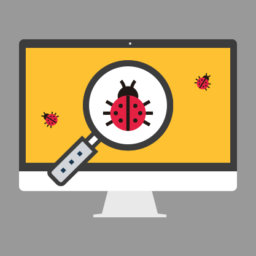Most of the software developers and testers have admitted that a bug-free software doesn’t exist. Bugs can be annoying yet they keep appearing in the software development process now and then. So, it is important to keep an eye on all defects and finding ways to manage them effectively. Over time, there are frequent requests to upgrade testing processes that can handle bugs in software development. In the agile environment, app developers need more agile strategies to manage bugs. They use defect management tools to manage bugs appearing in the system.
How does a bug affect your business?
On a smaller scale, we perceive bugs as issues that affect the software development process and create a negative impression of the product. But if we look at the bigger picture, these bugs may cost a lot. According to research by Tricentis (an Austrian software testing company), software failures cost the worldwide economy over $1 trillion annually. Moreover, the report also stated that software failures have caused 315 years of lost time. It has left a massive impact on the reputation of various companies. Yet, organizations do not talk about these bugs or find solutions to overcome them.
Let’s have a look at the best practices for managing bugs in software development lifecycle:
Use defect management tools:
Testers use defect/bug management tools to support real-time collaboration of bugs/defects that are shared and prioritized. A good defect management tool encompasses a record of detected bugs, allows users to report bugs and make feature requests directly on their apps. These tools also prioritize bugs and assign issues accordingly.
Prioritize your bugs:
When development teams do not pay attention to the backlog of reported bugs, the bugs can become completely unmanageable and can have adverse effects on the software apps. Thus, it is paramount to prioritize bugs and handle them correctly.
Mostly, bugs are to be prioritized according to the priorities of the business and their severity. Bugs with the highest priority are critical and need to be resolved first. However, bugs with the lowest priority do not require action immediately.
Conclusion
‘Bugs’ commonly appear during the software development process, and there is no defect-free app in the world. These defects keep occurring in various forms and have a direct impact on product quality. For quality assurance, development teams use defect management tools that make defect management easier. The defects are prioritized according to their nature, and the business requirements, which means that this needs to be sorted out. defect management tools work systematically and sort out various types of bugs into categories, which are prioritized and then assigned to various team members. Thus, allowing them to work on quality assurance, and save the product from any failures after release in the market. These tools are a gift to software testing as they make the process less strenuous and allow testers to focus on quality.






